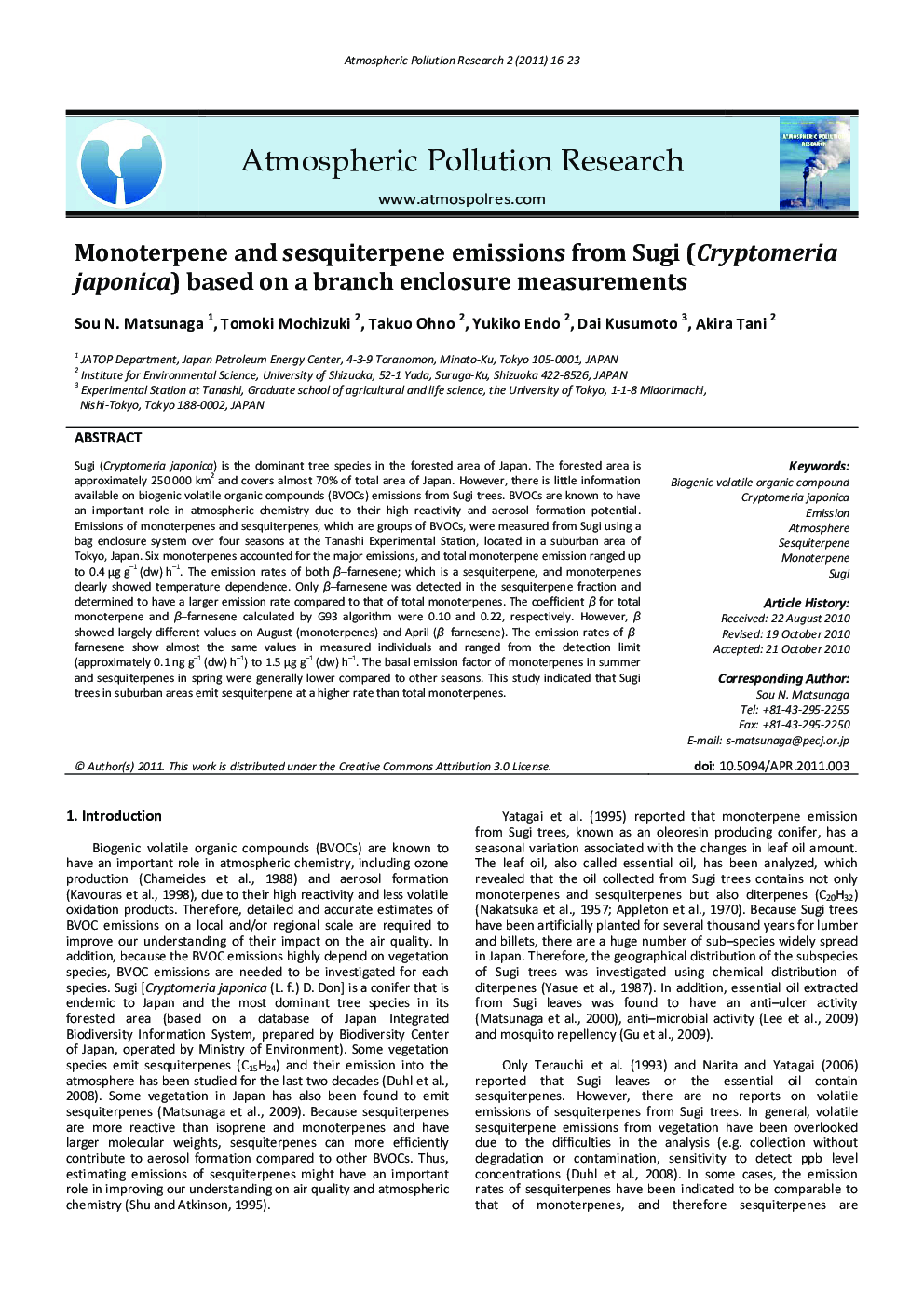| Article ID | Journal | Published Year | Pages | File Type |
|---|---|---|---|---|
| 4435003 | Atmospheric Pollution Research | 2011 | 8 Pages |
Sugi (Cryptomeria japonica) is the dominant tree species in the forested area of Japan. The forested area is approximately 250 000 km2 and covers almost 70% of total area of Japan. However, there is little information available on biogenic volatile organic compounds (BVOCs) emissions from Sugi trees. BVOCs are known to have an important role in atmospheric chemistry due to their high reactivity and aerosol formation potential. Emissions of monoterpenes and sesquiterpenes, which are groups of BVOCs, were measured from Sugi using a bag enclosure system over four seasons at the Tanashi Experimental Station, located in a suburban area of Tokyo, Japan. Six monoterpenes accounted for the major emissions, and total monoterpene emission ranged up to 0.4 µg g–1 (dw) h–1. The emission rates of both β–farnesene; which is a sesquiterpene, and monoterpenes clearly showed temperature dependence. Only β–farnesene was detected in the sesquiterpene fraction and determined to have a larger emission rate compared to that of total monoterpenes. The coefficient β for total monoterpene and β–farnesene calculated by G93 algorithm were 0.10 and 0.22, respectively. However, β showed largely different values on August (monoterpenes) and April (β–farnesene). The emission rates of β– farnesene show almost the same values in measured individuals and ranged from the detection limit (approximately 0.1 ng g–1 (dw) h–1) to 1.5 µg g–1 (dw) h–1. The basal emission factor of monoterpenes in summer and sesquiterpenes in spring were generally lower compared to other seasons. This study indicated that Sugi trees in suburban areas emit sesquiterpene at a higher rate than total monoterpenes.
